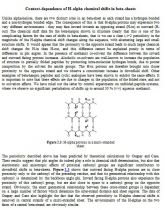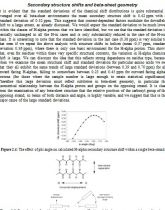Semestrálna práca: Štatistická analýza v chémii
Skryť detaily | Obľúbený- Kvalita:64,2 %
- Typ:Semestrálna práca
- Univerzita:Univerzita Mateja Bela v Banskej Bystrici
- Fakulta:Fakulta prírodných vied
- Kategória:Prírodné vedy
- Podkategória:Chémia
- Rozsah A4:4 strán
- Zobrazené:703 x
- Stiahnuté:1 x
- Veľkosť:0,1 MB
- Formát a prípona:MS Office Word (.doc)
- Jazyk:anglický
- ID projektu:3905
- Posledna úprava:13.07.2017
Unlike alpha-helices, there are two distinct sites in an beta-sheet as each strand has a hydrogen bonded and a non-hydrogen bonded edge. The consequence of this is that H-alpha protons may experience two very different environments - they may face inward towards an opposing strand (H-in) or outward (H-out) The chemical shift data for the beta-hairpin shown in illustrate clearly that this is one of the complicating factors for the case of shifts in beta-sheets, that is we see a clear i,i+2 periodicity in the magnitude of the H-alpha chemical shift changes along the sequence, with alternating large and small structure shifts. It would appear that the proximity to the opposite strand leads to much larger chemical shift changes for H-in than H-out, and this difference cannot be explained purely in terms of differences in phi angles. In the presence of methanol co-solvent the difference between the inward and outward facing protons increases. Alcoholic co-solvents are well-known to increase the population of structure in partially folded peptides by promoting intra-molecular hydrogen bonds, due to poorer competition by the solvent for amide groups. The H-in protons are therefore brought into closer proximity to the opposite strand and we observe a concomitant increase in downfield shift. Other examples of beta-hairpin peptides and cyclic analogues have been shown to exhibit the same effects. It is important to note that these effects are due to changes in the population of the folded state, and not to solvation effects. We have ruled out the latter by control experiments on unfolded peptide systems, where we observe no significant perturbation of shifts up to around 50 % (v/v) aqueous methanol.


